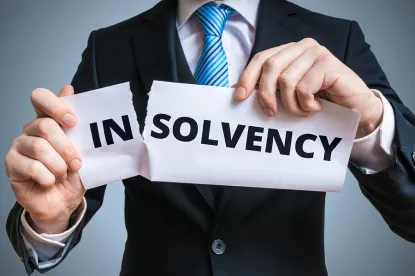On September 11, 2019, Hollister Construction Services, LLC filed for Chapter 11 bankruptcy protection in the District of NJ, Trenton Vicinage. The Parsippany-based construction company deals in general construction work, including ground-up construction services, interior and exterior renovations, and building additions.
When a developer such as Hollister files for bankruptcy the business and financial consequences do not stop with the filing company. Instead, dozens of other businesses and individuals involved in any given construction project become caught in a web of complex laws and regulations that often result in substantial delays and subcontractors not being paid in accordance with their contracts.
Despite these frustrations, it may not be a good idea for a design professional, consultant, or subcontractor working under contract for a corporation that has filed for bankruptcy to pack up their equipment and leave the job site. This is because most construction contracts between general and subcontractors are “executory” in nature. This generally means they are able to be revived by the bankrupt entity.
Bankruptcy is governed by federal law and its principal goal is to treat all similarly situated creditors equally while also avoiding a race to the courthouse among creditors who have not been paid for their work. In order to participate in any potential distribution of proceeds from the bankruptcy entity’s estate, a creditor must file a proof of claim by a date specified by the bankruptcy court. The claim represents a pre-petition debt owed by the debtor to the creditor and can include contingent contractual damage claims such as damages for delays on an uncompleted project.
In a construction context, subcontractors often obtain secured claims by filing a lien against a project prior to the project owner or developer filing for bankruptcy. These claims are first in line to be paid by the bankruptcy estate. Priority claims are next in the line of distribution. These claims can be for unpaid wages and benefits as well as consumer deposits. Finally, general unsecured claims are paid last and can be for any debt such as unpaid fees for professional services or a debt owed to a supplier of materials.
A bankruptcy filed by a construction company creates numerous complex problems from the standpoint of subcontractors, materialmen, and designers due to the vast number of entities involved in a single construction project and their interconnected nature. In the case of Hollister, according to its bankruptcy petition, it has between 200 and 999 creditors with $100 million to $500 million in assets and $100 million to $500 million in liabilities. The company also has approximately 94 employees. With a construction company as large as this, it is highly recommended that any potential creditor seek the advice of experienced legal counsel before stopping work or attempting to collect on a contractual debt. An unexperienced creditor may run afoul of bankruptcy statutes when trying to collect on its debt, which could result in that debt going unpaid.





 />i
/>i

